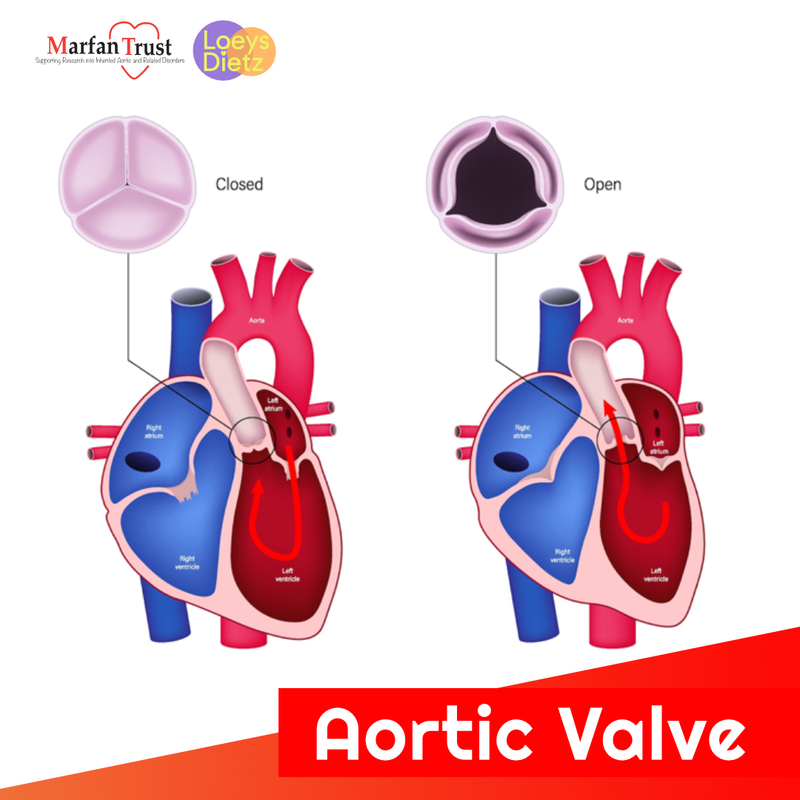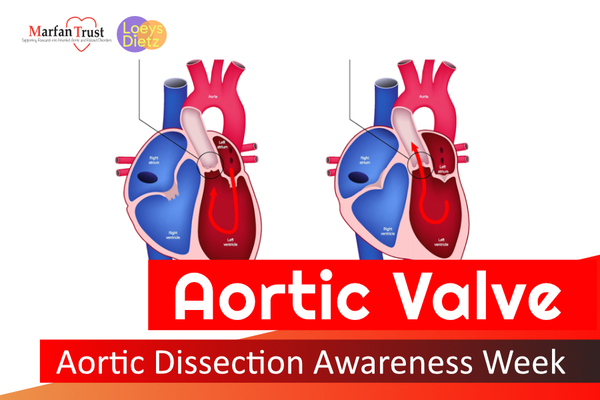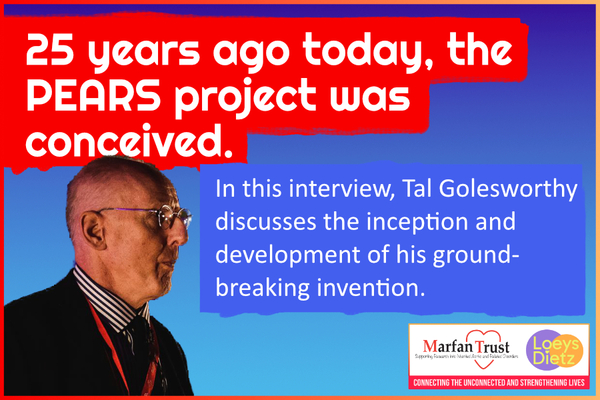Creating the beat of life are the doors of your heart. The heart is a perfect pump, reliant upon four valves that open and close like doors in precise sequence, to keep the blood flowing around the body in a strict one-way system. One of the four is the aortic valve...
The aortic valve is one of 4 valves in the heart, it sits between the left ventricle (the main pumping chamber of the heart) and the aorta (the main blood vessel that carries blood from the heart to the rest of the body). The mitral and aortic valves are the two that are most frequently associated with Marfan syndrome and the surgery that might be required.

[pictured: Aortic Root Ascending Aorta]
The aortic root and ascending aorta are most frequently associated with dilatation and aneurysm formation in Marfan syndrome, this diagram shows how the aortic valve sits at the bottom of the aortic root. Sometimes, if the aorta has become very dilated, the aortic valve can also be stretched and doesn’t close properly, causing a leaky valve with blood able to flow backwards into the left ventricle. This is known as aortic regurgitation, there are other causes of aortic regurgitation too.
Aortic Stenosis
With great advances in treatments, most people with Marfan syndrome are now living long lives. This is a wonderful leap forward, but it means that the issues of old age become more relevant. The aortic valve can become stiffened and calcified as we age so it can struggle to open and close properly, meaning the heart must work much harder to pump against a stiff valve, this is called aortic stenosis. It can cause serious symptoms which include shortness of breath, chest pain and dizziness or fainting.
Patients with Marfan syndrome will be having regular surveillance echocardiograms to keep an eye on their heart function and the size of their aorta. The echo allows your doctor to assess the function of the aortic valve and ensure that it is opening and closing well.
Problems with the aortic valve can be fixed with surgery and in some cases with a keyhole procedure. Sometimes the valve can be repaired but often it must be replaced with a tissue or mechanical valve.
If a patient needs aortic surgery, this sometimes involves replacement of the aortic valve too. These decisions are made on an individual basis once your surgeon has all the information that they need to decide which type of surgery would be best for you. They will discuss this with you and give you the opportunity to ask questions so you can make an informed decision about your treatment.









